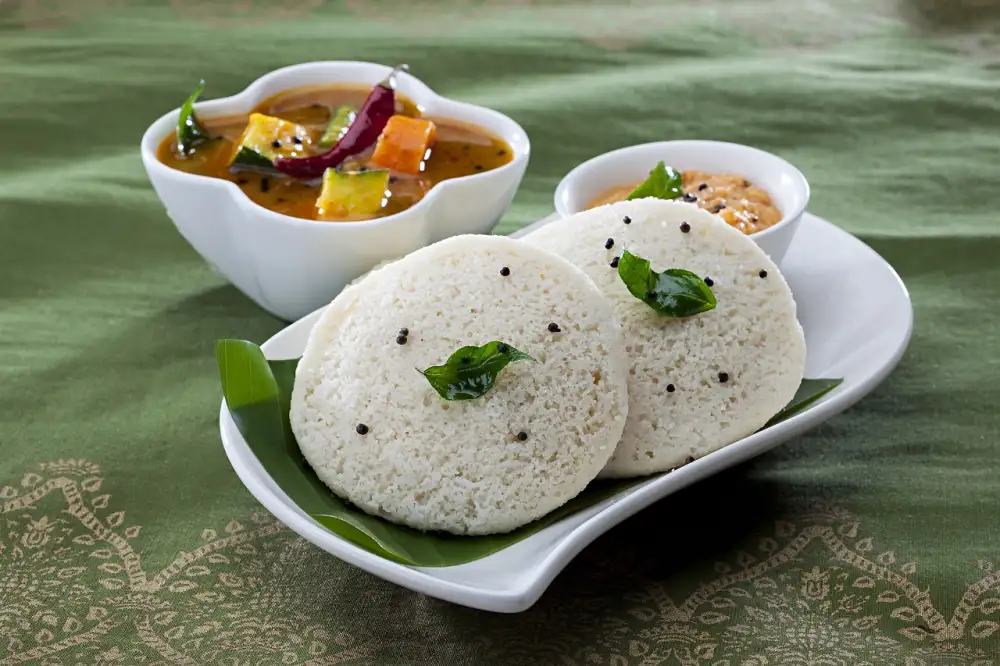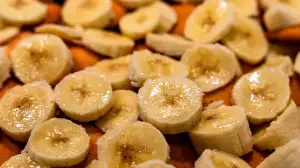Unveiling the Exquisite Flavors of Indian Cuisine: A Gastronomic Journey through Spices and Traditions

- Rich and Diverse Flavors of Indian Cuisine
- Popular Indian Spices and Ingredients
- Regional Varieties of Indian Food
- Famous Indian Dishes and Street Food
- Vegetarian and Vegan Options in Indian Cuisine
- Health Benefits of Indian Food
- Traditional Indian Desserts and Sweets
- Indian Food in the Global Culinary Scene
- Exploring Indian Food: Tips for Trying Authentic Indian Cuisine
Indian cuisine is a treasure trove of flavors, aromas, and textures that have captivated food lovers around the world. Rooted in centuries-old traditions and influenced by diverse regional cultures, Indian food is a celebration of spices, herbs, and vibrant ingredients. From the fiery curries of the north to the fragrant rice dishes of the south, Indian cuisine offers a culinary journey like no other. Whether you're a fan of vegetarian delights or crave succulent meat dishes, Indian food has something to tantalize every taste bud. Get ready to embark on a gastronomic adventure as we unveil the exquisite flavors of Indian cuisine.
Rich and Diverse Flavors of Indian Cuisine
Indian cuisine is renowned for its rich and diverse flavors that tantalize the taste buds. From spicy curries to aromatic biryanis, Indian food offers a wide range of flavors that cater to every palate. The use of various spices and herbs gives Indian dishes their distinct taste and aroma. Each region in India has its own unique flavor profile, making Indian cuisine a true gastronomic delight. Whether it's the fiery flavors of North Indian cuisine or the subtle and fragrant dishes from South India, there is something to suit every taste preference. With its bold and complex flavors, Indian cuisine is sure to leave a lasting impression on anyone who tries it.
Popular Indian Spices and Ingredients
Indian cuisine is renowned for its vibrant and aromatic flavors, which are achieved through the use of a wide array of spices and ingredients. Some of the most popular spices used in Indian cooking include cumin, coriander, turmeric, cardamom, cinnamon, cloves, and ginger. These spices not only add depth and complexity to dishes but also offer numerous health benefits.
In addition to spices, Indian cuisine incorporates a variety of ingredients such as lentils, rice, vegetables, meats, and dairy products. Lentils are a staple in Indian cooking and are used to make delicious dal (lentil soup) dishes. Rice is another essential ingredient in many Indian meals, with basmati rice being the most commonly used variety.
Vegetables play a significant role in Indian cuisine as well. Popular vegetables like potatoes, tomatoes, onions, cauliflower, spinach, and eggplant are frequently used in curries and stir-fries. Meats like chicken, lamb, and fish are also widely consumed in India.
Dairy products like yogurt (curd), ghee (clarified butter), paneer (cottage cheese), and milk are integral to Indian cooking. They add richness and creaminess to dishes while balancing out the spiciness.
These spices and ingredients come together harmoniously to create the distinct flavors that define Indian cuisine. Whether it's a fragrant biryani or a fiery curry, each dish showcases the complexity of flavors that make Indian food so beloved around the world.
Regional Varieties of Indian Food
India is a land of diverse cultures and traditions, and this diversity is beautifully reflected in its regional cuisines. Each region in India has its own unique flavors and cooking techniques that make the cuisine truly remarkable.
In the North, you will find rich and hearty dishes like butter chicken, biryani, and kebabs. The use of dairy products such as ghee (clarified butter) and paneer (Indian cottage cheese) is common in this region.
Moving towards the South, you will be greeted with a burst of flavors from coconut, curry leaves, and tamarind. Dishes like dosa, idli, and sambar are popular here. The cuisine is known for its spicy yet balanced taste.
In the East, seafood takes center stage with dishes like fish curry and prawn malai curry. Mustard oil is commonly used for cooking in this region, adding a distinct flavor to the dishes.
The West offers a fusion of flavors influenced by both Gujarati vegetarian cuisine and the rich Mughlai food from Rajasthan. Dhokla, dal baati churma, and pav bhaji are some famous dishes from this region.
In Central India, you will find a mix of vegetarian and non-vegetarian delicacies. Bhopali biryani, poha (flattened rice), and kebabs are some highlights of this region's cuisine.
Each regional cuisine has its own specialties that reflect the local culture and ingredients available. Exploring these regional varieties is like embarking on a culinary adventure through India's diverse landscape.
Famous Indian Dishes and Street Food
Indian cuisine is renowned for its wide array of delicious dishes and vibrant street food. From rich curries to flavorful snacks, here are some iconic dishes you must try.
1. Butter Chicken: This creamy and aromatic dish features tender chicken cooked in a tomato-based gravy with butter and spices. It is best enjoyed with naan or rice.
2. Biryani: A fragrant rice dish cooked with meat or vegetables, biryani is a favorite across India. Each region has its own unique style, but the flavors are always exquisite.
3. Masala Dosa: Originating from South India, this crispy pancake-like dish is made from fermented rice and lentil batter. It is typically filled with a spiced potato mixture and served with chutney and sambar.
4. Chaat: India's street food scene is incomplete without chaat. This savory snack combines various ingredients like crispy fried dough, potatoes, chickpeas, yogurt, chutneys, and spices to create an explosion of flavors in every bite.
5. Vada Pav: Often referred to as the Indian burger, vada pav consists of a deep-fried potato fritter (vada) served inside a bun (pav). It is commonly found on the streets of Mumbai and makes for a satisfying quick meal.
6. Golgappa/Pani Puri: These small crispy hollow puris are filled with spicy tangy water (pani) along with mashed potatoes, chickpeas, tamarind chutney, and sev (crunchy noodles). They are popular street snacks that will tantalize your taste buds.
7. Tandoori Chicken: Marinated in yogurt and spices, tandoori chicken is cooked in a traditional clay oven called a tandoor. The result is succulent chicken with smoky flavors that are hard to resist.
These are just a few examples of the incredible variety of Indian dishes and street food available. Exploring the local cuisine is an adventure that will leave you craving for more.
Vegetarian and Vegan Options in Indian Cuisine
One of the remarkable aspects of Indian cuisine is its wide array of vegetarian and vegan options. In fact, a significant portion of traditional Indian dishes are naturally plant-based, making it a paradise for those following a meat-free lifestyle.
Indian cuisine embraces the use of lentils, legumes, vegetables, and grains as the foundation for many dishes. Popular vegetarian choices include dal (lentil curry), chana masala (spiced chickpeas), and baingan bharta (roasted eggplant). These dishes are bursting with flavors from aromatic spices like cumin, coriander, turmeric, and garam masala.
For vegans, Indian cuisine offers an abundance of choices as well. Dishes like aloo gobi (potato and cauliflower curry), palak paneer (spinach with tofu), and vegetable biryani (fragrant rice dish) are often made without any animal products. Coconut milk or yogurt is commonly used as a substitute for dairy in many recipes.
Indian street food also caters to vegetarians and vegans. You can indulge in mouthwatering snacks like samosas (crispy pastry filled with spiced potatoes or lentils), pakoras (deep-fried fritters made with vegetables or lentils), and pani puri (hollow crispy shells filled with tangy tamarind water).
Whether you follow a vegetarian or vegan diet or simply want to explore new flavors, Indian cuisine provides an extensive range of delicious options that will satisfy your taste buds while keeping your dietary preferences intact.
Health Benefits of Indian Food
Indian cuisine not only tantalizes the taste buds but also offers numerous health benefits. The use of spices such as turmeric, cumin, coriander, and ginger provides anti-inflammatory properties that can help reduce the risk of chronic diseases like heart disease and cancer. Additionally, Indian food is often cooked with healthy oils like mustard oil or ghee, which are rich in monounsaturated fats and can improve cholesterol levels. Lentils and legumes commonly found in Indian dishes are excellent sources of protein and fiber, promoting digestive health and aiding in weight management. The inclusion of a variety of vegetables and herbs ensures a high intake of vitamins, minerals, and antioxidants. With its emphasis on fresh ingredients and balanced flavors, Indian cuisine offers a delicious way to maintain a healthy lifestyle.
Traditional Indian Desserts and Sweets
No Indian meal is complete without indulging in the delectable array of traditional desserts and sweets. Indian cuisine boasts a wide variety of sweet treats that are sure to satisfy any sweet tooth.
One popular dessert is Gulab Jamun, which consists of deep-fried milk dumplings soaked in a sugary syrup flavored with cardamom and rose water. Another beloved treat is Jalebi, made by deep-frying a fermented batter in pretzel-like shapes and then soaking them in a saffron-infused sugar syrup.
For those who prefer something lighter, there's Kheer, a creamy rice pudding flavored with cardamom, saffron, and nuts. And let's not forget about the famous Rasgulla - soft cottage cheese balls cooked in a sugar syrup until they become spongy and melt-in-your-mouth delicious.
Indian sweets are often made with ingredients like milk, ghee (clarified butter), sugar, nuts, and aromatic spices. Each region of India has its own specialty sweets that reflect its unique culinary traditions.
Whether it's the rich and creamy Mysore Pak from South India or the flaky and nutty Petha from North India, there is no shortage of options when it comes to satisfying your sweet cravings in Indian cuisine.
So next time you're exploring Indian food, make sure to save some room for these delightful desserts. They are the perfect way to end a meal on a sweet note and experience the true essence of Indian culinary magic.
Indian Food in the Global Culinary Scene
Indian cuisine has made its mark on the global culinary scene, captivating taste buds and winning hearts worldwide. With its bold flavors, vibrant colors, and unique cooking techniques, Indian food has become a favorite among food enthusiasts across the globe.
Restaurants serving Indian cuisine can be found in almost every major city around the world. From London to New York, Sydney to Tokyo, people are flocking to these establishments to experience the rich tapestry of flavors that Indian food offers.
The popularity of Indian cuisine can be attributed to its versatility. Whether you're a meat lover or a vegetarian, there is something for everyone in Indian food. The wide range of vegetarian and vegan options makes it an appealing choice for those following plant-based diets.
Moreover, Indian cuisine is known for its health benefits. Many spices used in Indian cooking have medicinal properties and are believed to aid digestion and boost immunity. Turmeric, cumin, coriander, and ginger are just a few examples of these beneficial spices.
Indian food also offers a variety of traditional desserts and sweets that are loved by people all over the world. From creamy rice pudding (kheer) to syrup-soaked gulab jamun, these indulgent treats provide a sweet ending to any meal.
If you're new to Indian cuisine or looking to explore it further, here are some tips: start with popular dishes like butter chicken or tikka masala for non-vegetarians, or try flavorful vegetable curries like palak paneer or chana masala if you prefer vegetarian options. Don't forget to pair your meal with fragrant basmati rice or freshly baked naan bread.
So why not embark on a gastronomic adventure and indulge in the exquisite flavors of Indian cuisine? Let your taste buds be transported to India as you savor the aromatic spices and authentic dishes that have captured hearts around the world.
Exploring Indian Food: Tips for Trying Authentic Indian Cuisine
When trying authentic Indian cuisine, it's important to keep a few tips in mind. First, be prepared for bold and intense flavors. Indian food is known for its use of spices and can be quite spicy. Start with milder dishes if you're not accustomed to heat.
Secondly, don't be afraid to experiment and try new dishes. Indian cuisine offers a wide variety of options, from vegetarian curries to meat-based dishes like biryani or tandoori chicken. Explore different regions and their specialties.
Additionally, try eating with your hands! In many parts of India, it is common to eat using your fingers instead of utensils. This can enhance the sensory experience and connect you more closely with the food.
Lastly, don't miss out on street food! Street vendors offer a plethora of delicious snacks like samosas, chaat, and dosas. These affordable treats are a great way to taste the local flavors and experience the vibrant street culture.
By following these tips, you'll be well-prepared to embark on an exciting gastronomic journey through the exquisite flavors of Indian cuisine. Enjoy exploring the diverse culinary traditions that make India one of the most beloved destinations for food lovers around the world.
Published: 18. 11. 2023
Category: Food



